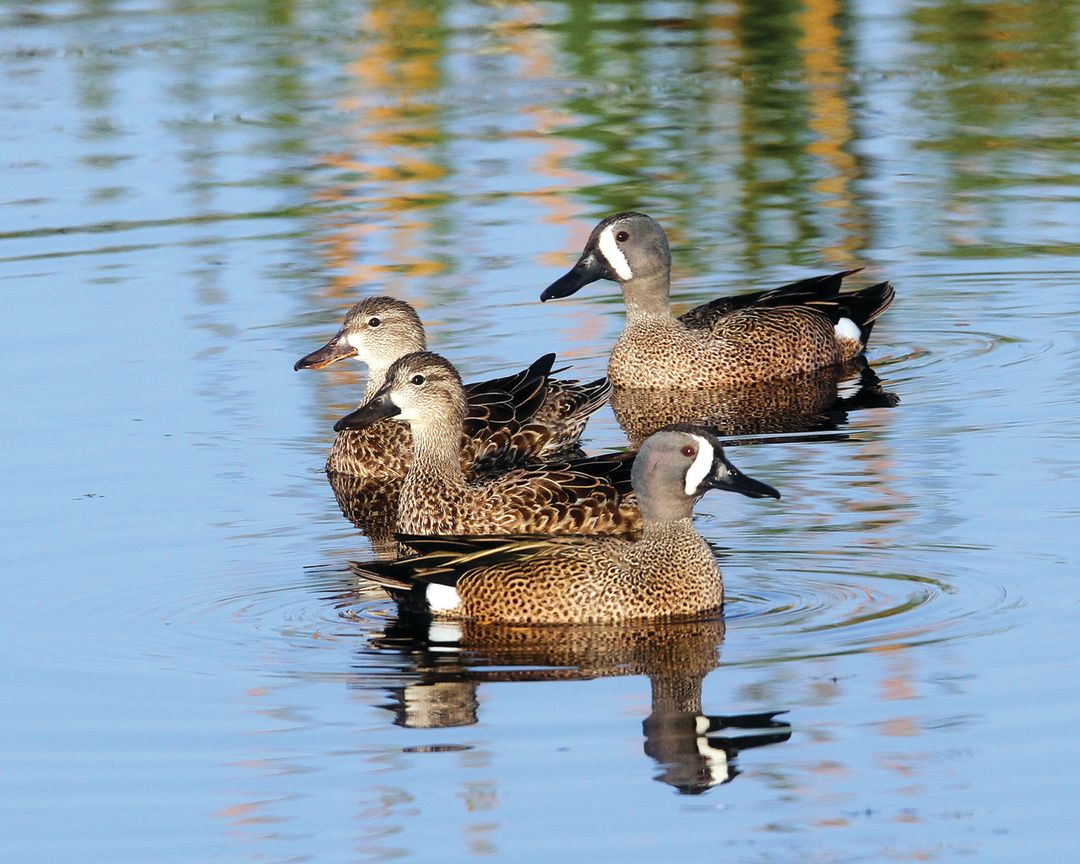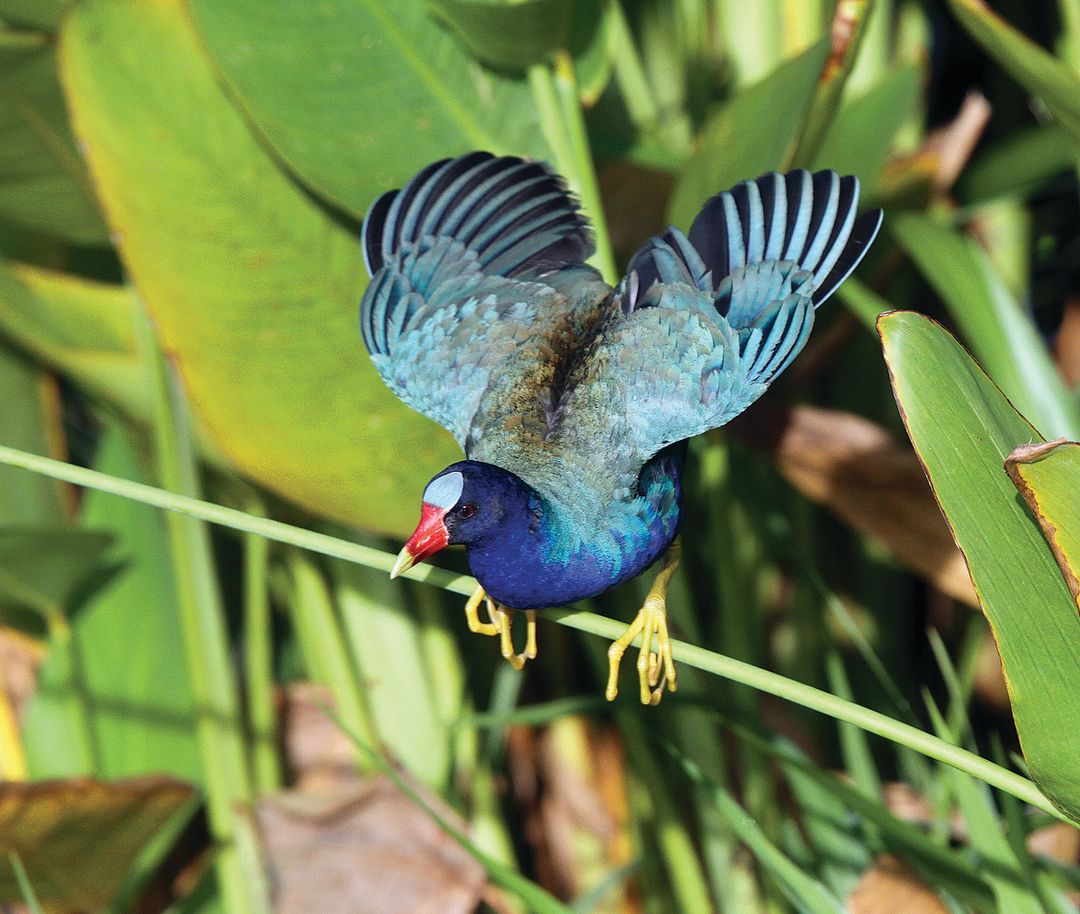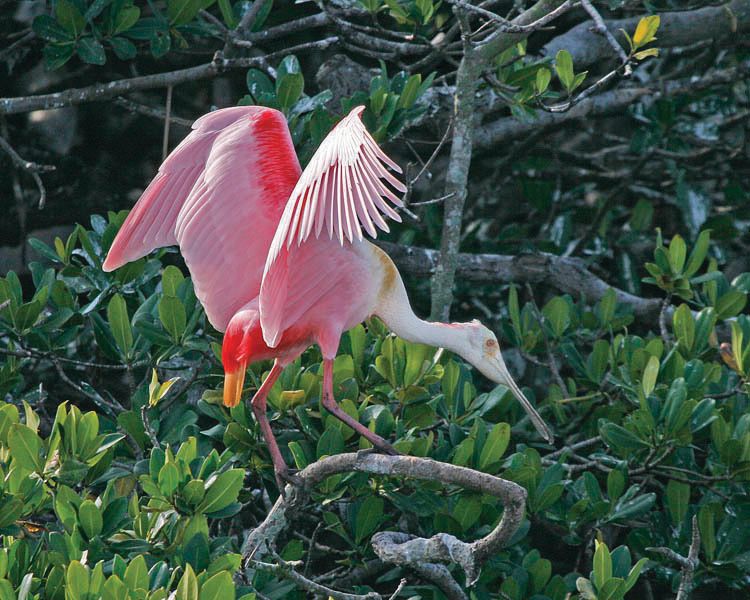This is the Best Spot for Bird-Watching in Sarasota

Image: Rick Greenspun
On a bright Sunday morning in October, a half-dozen bird watchers were ensconced in the gazebo off the boardwalk of Sarasota’s Celery Fields. Nailed to a beam was a list of 220 species of gulls, grouse, woodpeckers, cranes and other birds. Working in shifts from dawn until late afternoon, the bird watchers peered through high-powered binoculars and tripod-mounted spotting scopes, checking off as many species as they could spot.
They could not have come to a better place. The Celery Fields, for decades a bastion for agriculture, have been transformed into a 300-acre sanctuary for scores of bird species, including bald eagles, roseate spoonbills, sandhill cranes and purple gallinules. Its marshy fields filled with alligator flag, sawgrass and bull rush serve both the county’s need as a collection area for stormwater and as a near-perfect avian habitat.
On this weekend, bird watchers around the country were gathering for “Big Sits” in which, staying within 17-foot circles, they counted as many birds as they could spot in a single day. Last year at the Celery Fields, bird watchers spotted 64 species, ranking the site among the top five in Florida.
This year, when the final scopes and binoculars were packed away around 7:30 p.m., the bird watchers had checked off 59, which again ranked among the most in Florida. But it is just a fraction of the 220 species that have been spotted in recent years at the Celery Fields’ 440 acres about a mile southeast of the Interstate 75-Fruitville Road interchange.
“This is the best birding spot in Sarasota County,” says Stu Wilson, who has organized the bird-counting event the past four years. “It has gotten statewide and even national recognition.”

Image: Rick Greenspun
The Celery Fields have not only become a haven for birds; they’re also a center for educational programs. Last year, the Sarasota Audubon Society opened a nature center, where Audubon volunteers teach students and adults about birds and other wildlife, including classes on ducks, raptors and children’s workshops and activities.
From Nov. 1 through the end of April, Audubon naturalists staff the Celery Fields’ two boardwalks from 8:30 to 10:30 a.m., answering questions and helping visitors see through spotting scopes what the naked eye would so easily miss. Last year, they interacted with more than 4,000 visitors.
Wilson, 60, moved to Sarasota five years ago from Austin, Texas. He made his living as an engineering consultant, but today his business card identifies him as “Conservation philanthropist/amateur ornithologist/adventure seeker/sporadic writer.” He has been an avid birder for nearly two decades, traveling to every continent except Antarctica.
“I’m getting ready to make my sixth trip to Africa,” he says. “Birding hooks you. It gives you an excuse to travel and it keeps you active.”
Wilson is quick to point out that the “Big Sit” is an anomaly. Most bird watching involves walking two or three miles, at spots such as Robinson Preserve in Manatee County, Siesta Key Beach and Pinecraft Park in Sarasota, and Oscar Scherer State Park in Osprey and the Venice Area Audubon Society Rookery.
“It’s something that’s very easy to get started with,” Wilson says of birding. “Buy a field guide. Join the Sarasota Audubon. Find someone to take you out. And you’re off.”
Kathryn Young, a retired nurse from Minnesota, got hooked on birding 12 years ago. Today, under the Celery Fields’ gazebo, she looks the part, wearing a big-brimmed hat, with Swarovski binoculars (price: more than $2,500) draped under her neck as she peers into a tripod-mounted spotting scope.
“I’m a city girl, from Minneapolis, but I always loved nature. And from the first time I went bird watching, I was just mesmerized,” Young says. “There was this secret world I had no idea about, living parallel lives with ours. I started out with these little opera glasses, then I got a $200 pair of binoculars. Then I splurged and got the Swarovskis.”

Image: Rick Greenspun
Young compares birding to hunting, without the killing. There’s even a website, Ebird, where birders can post pictures and stories. Birders will go to extremes, such as staking out the edges of Louisiana rice fields at harvest to catch glimpses of the small, reclusive yellow and black rails. The rice field owners sell tickets and flocks of birders congregate for two- or three-day festivals.
Young is Sarasota Audubon’s education chair and leads field trips several times a week. She has also turned her passion into a business, Sarasota Bird Guide. Serious bird watchers enlist her services to find elusive species such as the mangrove cuckoo, which is about a foot long and is distinguished by its “black facial mask and buffy underparts,” says Wikipedia.
“Your best chance to see the mangrove cuckoo is in the spring, when it’s breeding,” Young says. “Birders who come down here really know what they want to see. One guy paid me $100 to help him find a Bachman’s sparrow. They’re very elusive. But I knew just where to find them, along this spot near Sidell Road (east of Myakka River State Park).”
Young equally enjoys taking novices out on nature walks for the first time and opening them up to a new world within our own. “It’s brought so much joy to my life,” Young says. “You develop great friendships with other birders. And it’s a chance to be outside and enjoy this beautiful area.”
For more information about guided walks, educational programs and events, go to the Sarasota Audubon Society’s website at sarasotaaudubon.org or call (941) 312-6533.



